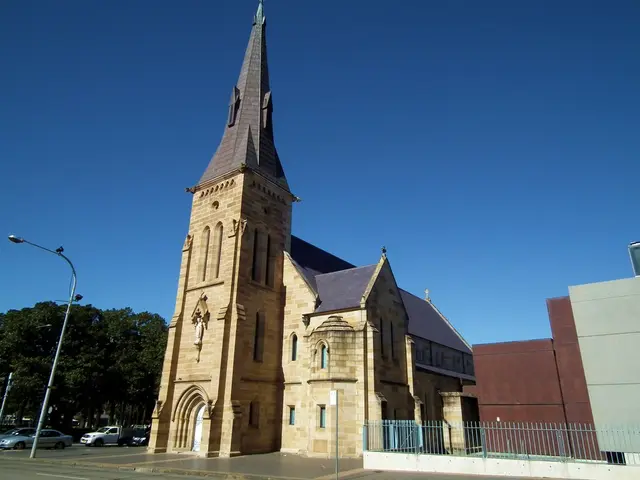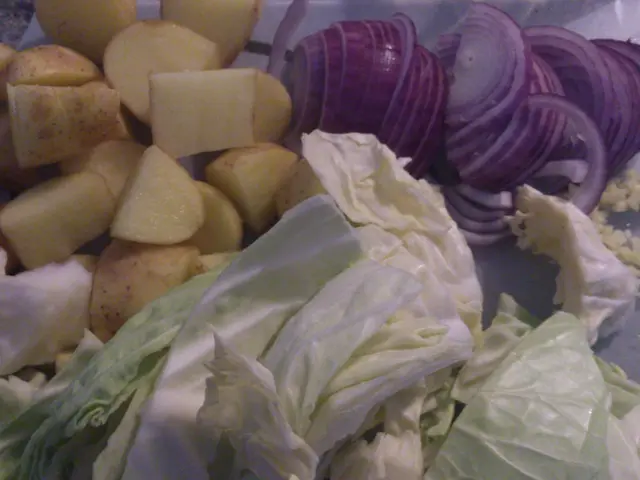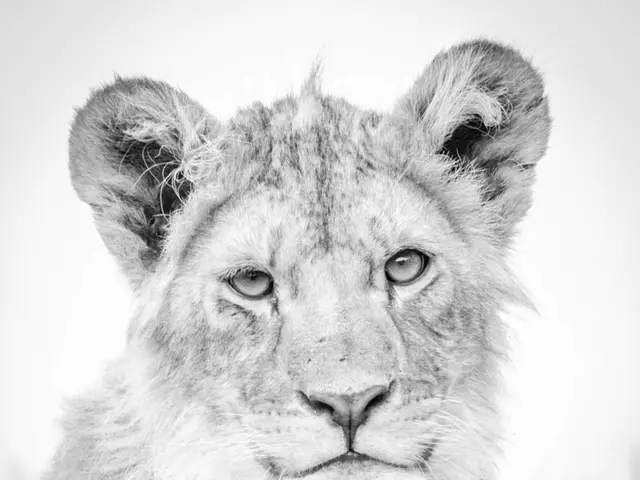Central Asian Fashion's Ascension in London's Urban Landscape: Exploring the Influence from the Grasslands to the City Streets
London's Fashion Landscape Evolves: Enter Central Asian Design
Something's brewing in the heart of London's fashion scene, and it's unlike anything the city has seen before. Designers from Central Asia are making their mark, bringing bold colors, intricate textiles, and centuries-old craftsmanship to the forefront - creating a fresh perspective that's deeply rooted in heritage yet screams contemporary style.
From the bustling streets of Tashkent to the serene landscapes of Bishkek, a new wave of creative minds is translating their cultural heritage into clothing that resonates with today's style-savvy audience. This movement is as much about reconnection as it is about rebellion, and its impact is undeniable.
Take a peek at what's happening on the edge of fashion – sign up for our newsletter!
Central Asian designers are popping up in London like wildflowers – from pop-up exhibitions in Shoreditch to carefully curated racks in independent boutiques. The appeal lies in the incredible blend of traditional silhouettes and contemporary ease – a tête-à-tête between tradition and the modern world.
This trend is driven by a mixture of factors – London's Central Asian diaspora finding solace in fashion, a desire for ethical production, an emphasis on sustainability, and a growing interest in underrepresented stories.
One designer embodying this cultural connection is Kamola Rustamova from Tashkent. Her label, Azukar Moreno, is a stunning blend of Uzbek craftsmanship and Spanish costume elements. Think flamenco-inspired ikat dresses or embroidered jackets with dramatic sleeves. Her designs are a global delight and a deeply personal statement of pride and heritage.
Rustamova recalls a London customer who once exclaimed, "I've never worn anything so radiant in my life." A sentiment she frequently encounters, reflecting the uniqueness of her designs. Her work has found a loyal following among London's Uzbek community, offering them a bold, expressive alternative to mainstream styles.
"It's empowering to wear your own culture," says Rustamova, "especially when it's been reimagined for today."
Baku-based designer Natavan Aliyeva echoes Rustamova's sentiment. She believes the growing interest in Central Asian fashion goes beyond aesthetics – it's about connection. "These motifs have a warmth to them," she says, joking how traditional patterns often reflect the region's vibrant landscapes and rich artistic heritage.
Aliyeva believes the emotional power of these designs is as strong as their visual impact. "It's like a cocoon – a feeling of warmth and protection – that's in their simplicity," she explains. It's both a tactile and psychological experience, she says, as natural fabrics and familiar forms offer not just style but a quiet sanctuary.
Preserving these traditions is at the heart of Aliyeva's work – and one of the main reasons she turned to fashion in the first place. "Our roots are a source of strength and pride," she declares. "They tell the story of who we are."
The humble Chapan, once a staple garment in Central Asia, has found admirers in the most exclusive circles of British society. Tolgonai Baira, a Kyrgyz designer whose atelier in Kyrgyzstan continues to attract the attention of diplomatic circles and international clients, reveals that even people close to the royal family have ordered Chapans from her. The centuries-old garment is now more in demand than ever.
Baira's relationship with the United Kingdom goes beyond business. "London left a mark on my heart," she recalls, her voice tinged with nostalgia. Her time in the British capital not only exposed her to Western aesthetics but also deepened her understanding of the cultural exchange that fashion fosters.
Yet, Baira believes that the Western-inspired phase of fashion has reached its creative limits. "This trend has run its course because the designs were mainly inspired by European trends," she says. Today, she sees a new wave – rooted in the vibrant colors, intricate patterns, and historical depth of Central Asian design.
"Hence, the focus is now shifting towards Central Asian countries," explains Baira. "Many new things are happening." Indeed, a new generation of designers in cities like Bishkek, Almaty, and Tashkent are reinterpreting traditional clothing for global runways and British wardrobes.
For Londoners seeking elegance with meaning, the Chapan and Atlas fabric could be the most expressive fashion statement of the season.
Highlight Image: Courtesy by Kamola Rustamova
Words: Contributor to our platform, Fuad Alakbarov
Enrichment Data:
Overall:
Emerging Trend in London Fashion: Central Asian Designers
In recent years, London's fashion scene has witnessed a significant rise in the influence of Central Asian designers. This trend is marked by a blend of traditional craftsmanship, bold colors, and intricate textiles, merged with modern style and wearability.
Key Features of Central Asian Fashion in London
- Cultural Heritage: Central Asian fashion draws heavily from regional cultural heritage, incorporating traditional silhouettes and craftsmanship into contemporary designs. For example, Uzbek designer Kamola Rustamova combines Uzbek craftsmanship with Spanish costume elements, creating unique garments like flamenco-inspired dresses with Ikat fabrics[1].
- Influence on Contemporary Style: The integration of Central Asian designs into London's fashion landscape is driven by the city's Central Asian diaspora, who are seeking to reconnect with their roots through fashion. This trend aligns with broader industry shifts towards ethical production, modest dressing, and underrepresented narratives[1].
- Visibility and Popularity: Central Asian fashion is becoming increasingly visible in London, with pop-up exhibitions and curated showcases in independent boutiques. This visibility reflects a growing interest in diverse cultural narratives within the fashion industry[1].
Notable Designers and Events
- Kamola Rustamova: Known for her label Azukar Moreno, Rustamova is a Tashkent-based designer who exemplifies the crossover between traditional Uzbek craftsmanship and modern global styles[1].
- Cultural Fashion & Style Week: Events like this celebrate traditional clothing alongside modern designs, highlighting the cultural depth and diversity of Central Asian fashion, such as the showcase featuring Uyghur culture[4].
Impact on London's Fashion Scene
The influence of Central Asian designers is part of a larger trend in London's fashion scene, which is increasingly embracing diverse cultural narratives and ethical fashion practices. This trend not only enriches the city's fashion landscape but also provides a platform for underrepresented voices in the industry. As Central Asian fashion continues to grow, it is likely to have a lasting impact on contemporary style in London.
- The trend of Central Asian designs is making a significant impact on London's fashion scene, embodied in the work of designer Kamola Rustamova from Tashkent whose label, Azukar Moreno, blends Uzbek craftsmanship with Spanish costume elements.
- As more Central Asian designers pop up in London, there's a growing interest in underrepresented stories, ethical production, and sustainability in the city's fashion industry.
- London's Fashion Week could potentially feature designs from a new generation of Central Asian creatives as they reinterpret traditional clothing for global runways and British wardrobes, enriching London's fashion landscape with vibrant colors and intricate patterns showcasing the region's heritage.








